Abstract
Pigeons were exposed to two keys, a main key and a changeover key. Initially non-differential training was given in which pecking the main key was reinforced on a variable-interval 2-min schedule when the key displayed the first stimulus, a black line on a blue background, and was reinforced on an identical but independent variable-interval 2-min schedule when the key displayed a plain blue stimulus. Later, differential training was given in which pecking the main key was reinforced on a variable-interval 2-min schedule when the first stimulus was displayed; and was reinforced on a variable-interval 10-min schedule when a second stimulus, a black line of another orientation on a blue background, was displayed. During non-differential and differential training, each peck on the changeover key changed the stimulus on the main key. Generalization tests were given before and after the differential training. These consisted of presentations on the main key of seven orientations of the black line on the blue background, including the first and second stimuli, with no reinforcements being given. Changeover-key pecks changed the stimuli on the main key. Generalization gradients were obtained using three measures: time spent, responses, and response rate in the presence of each test stimulus. Typically, maximum values on these measures occurred to stimuli away from the first in a direction opposite the second stimulus, and minimum values occurred to stimuli away from the second in a direction opposite the first.
Full text
PDF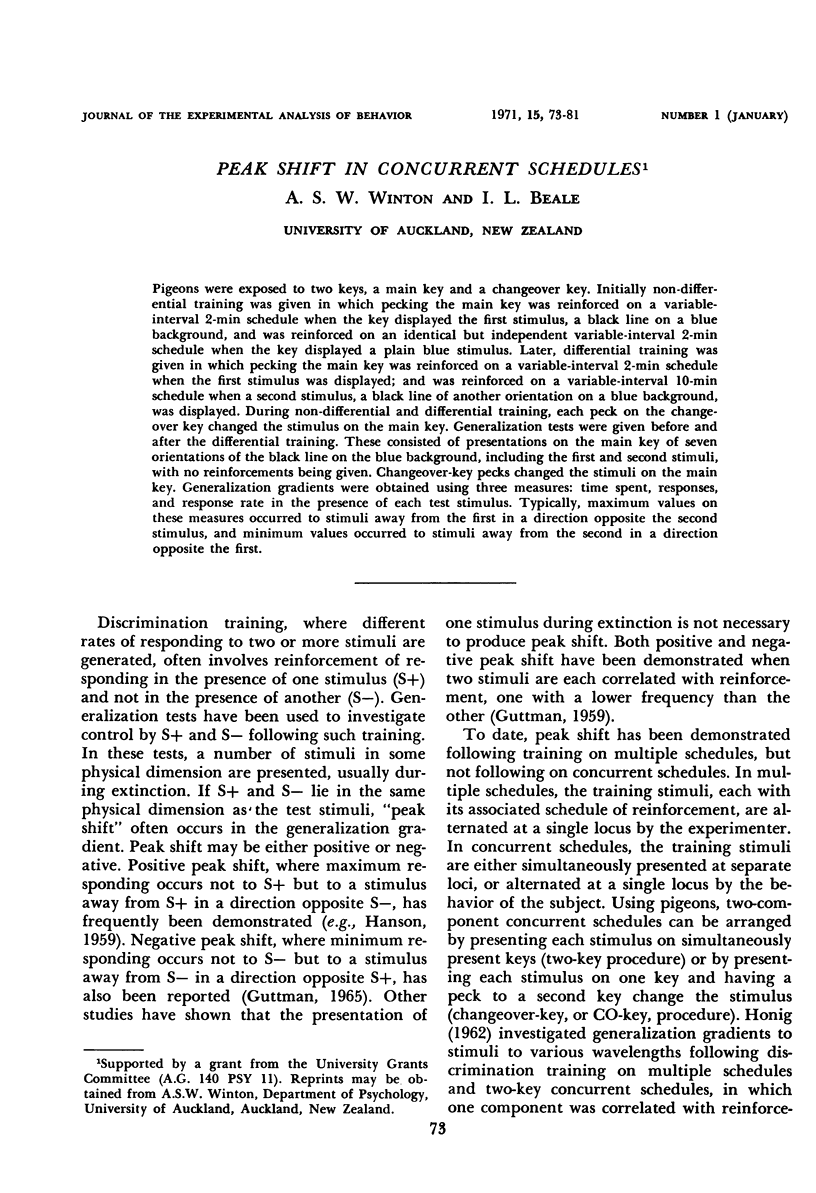
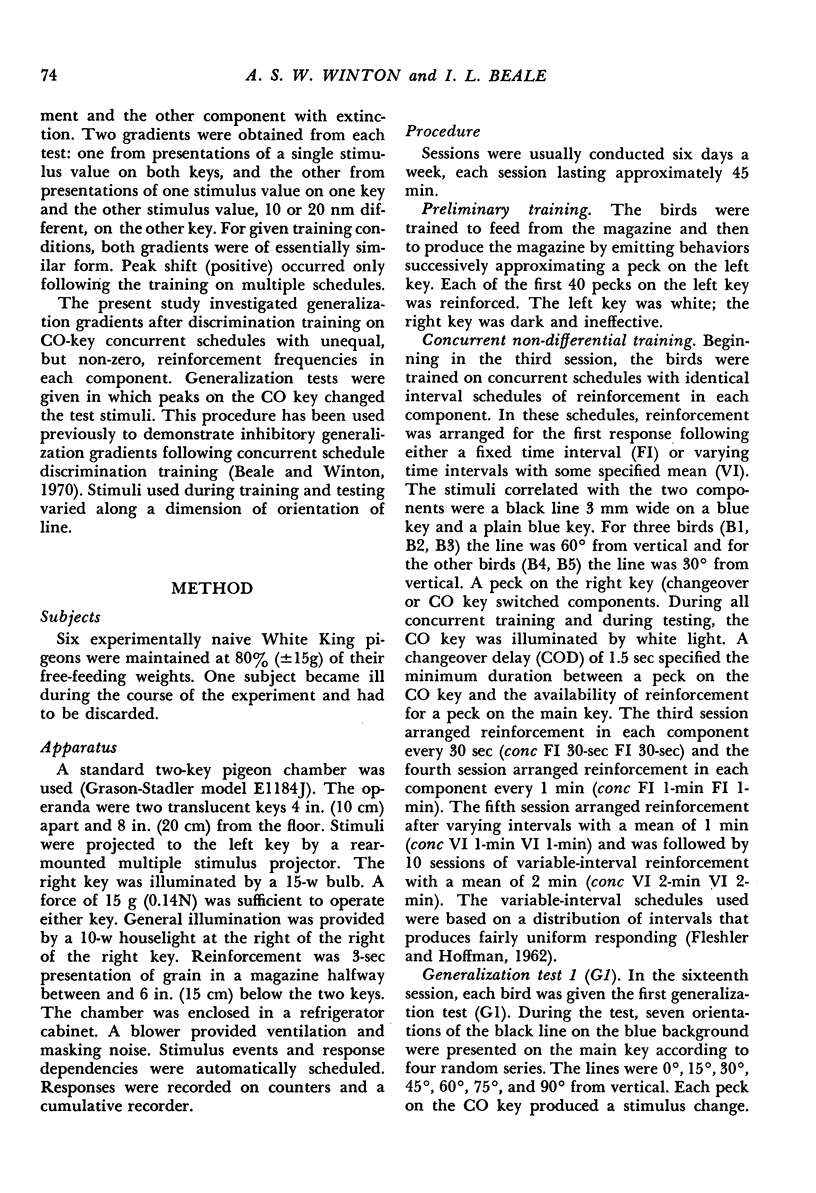
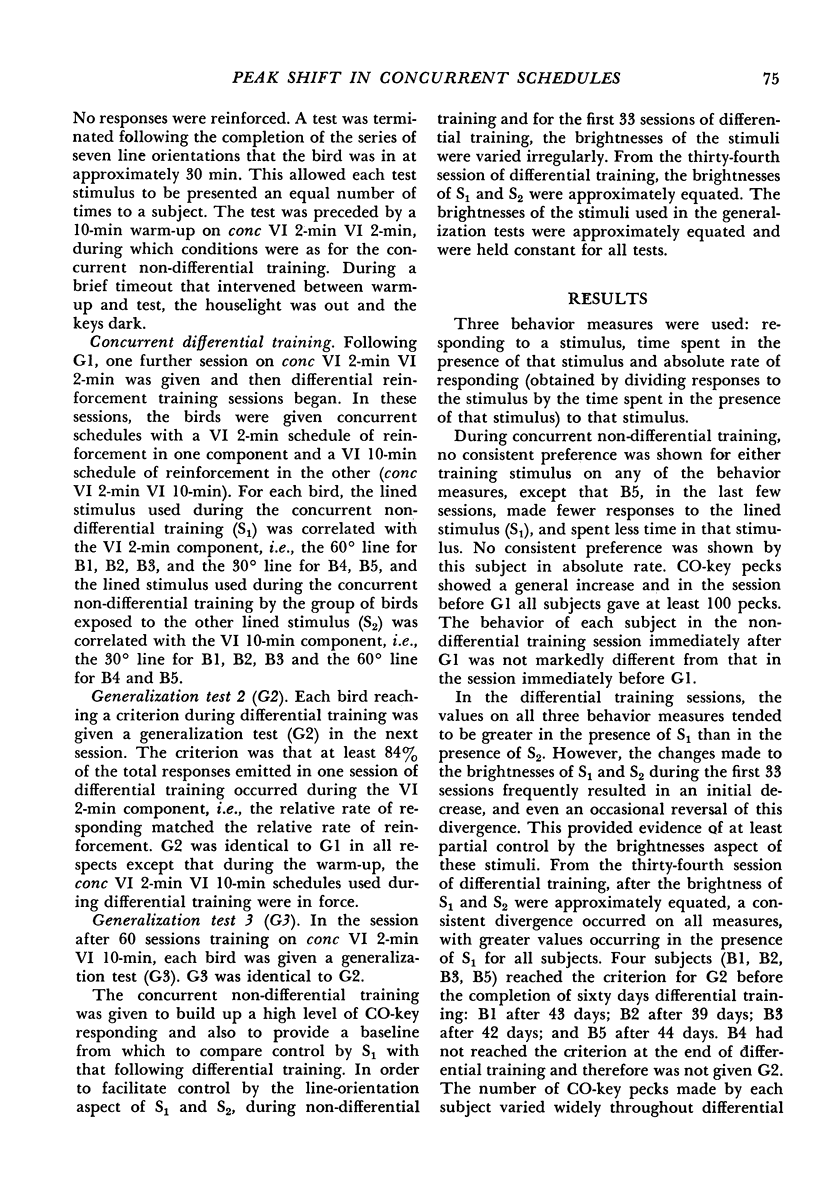
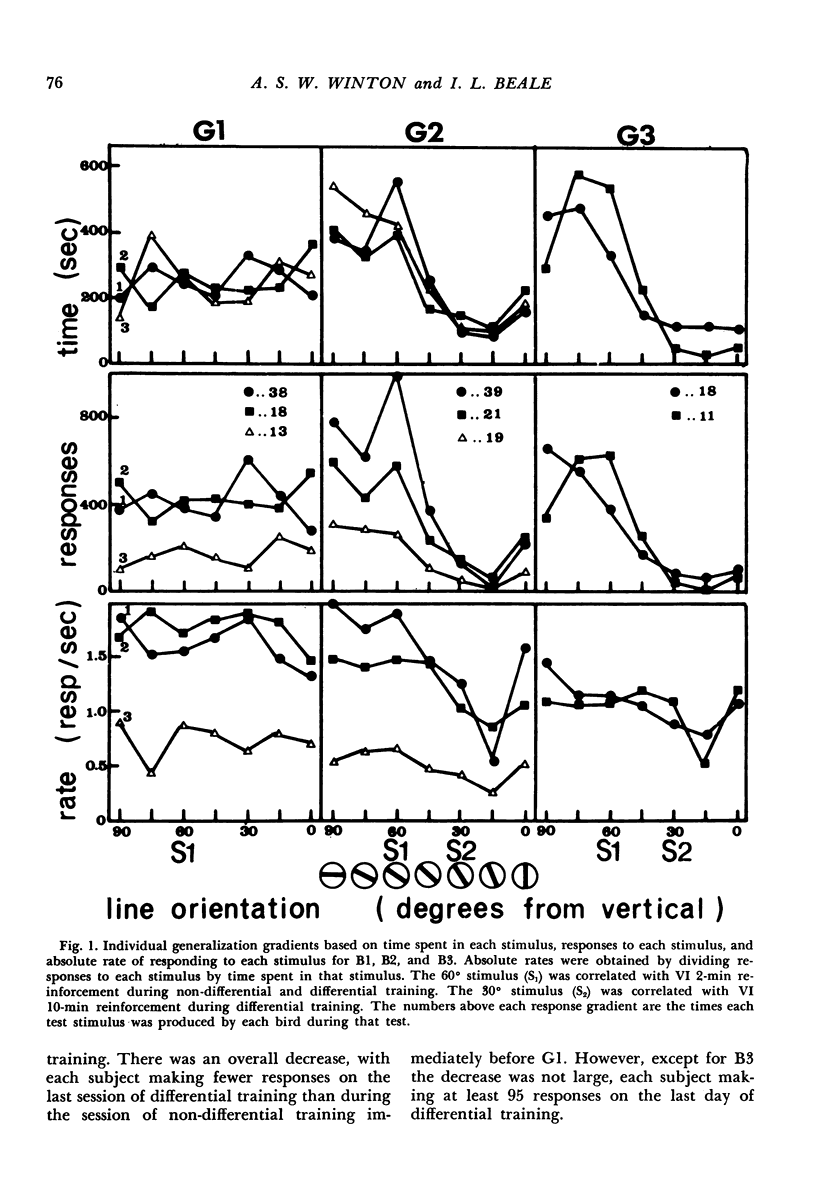
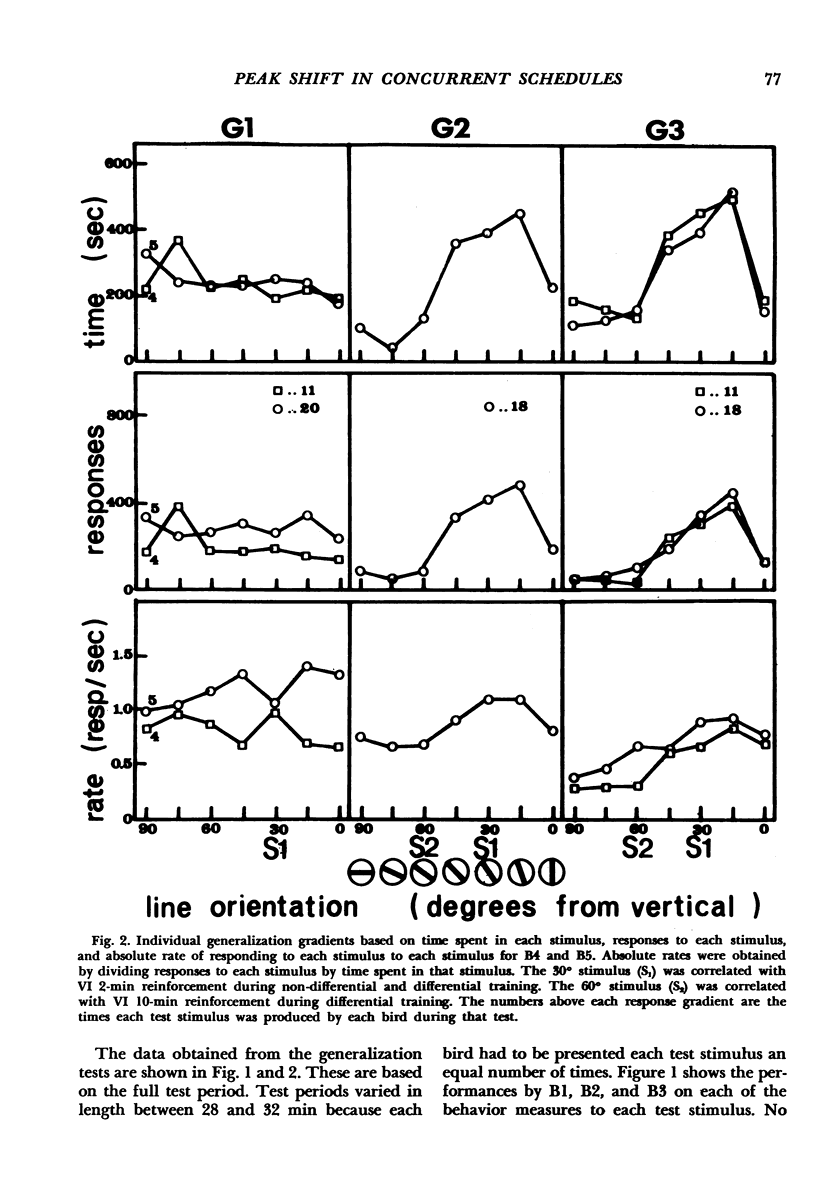
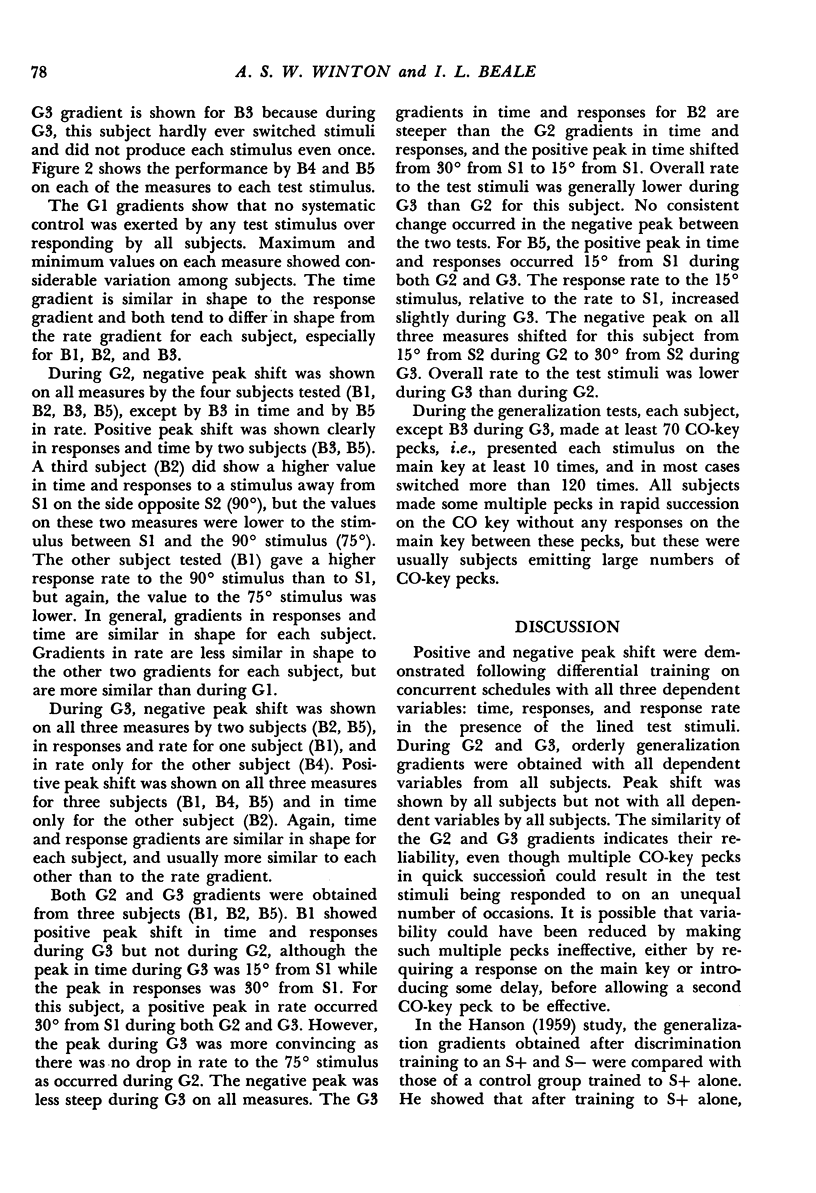
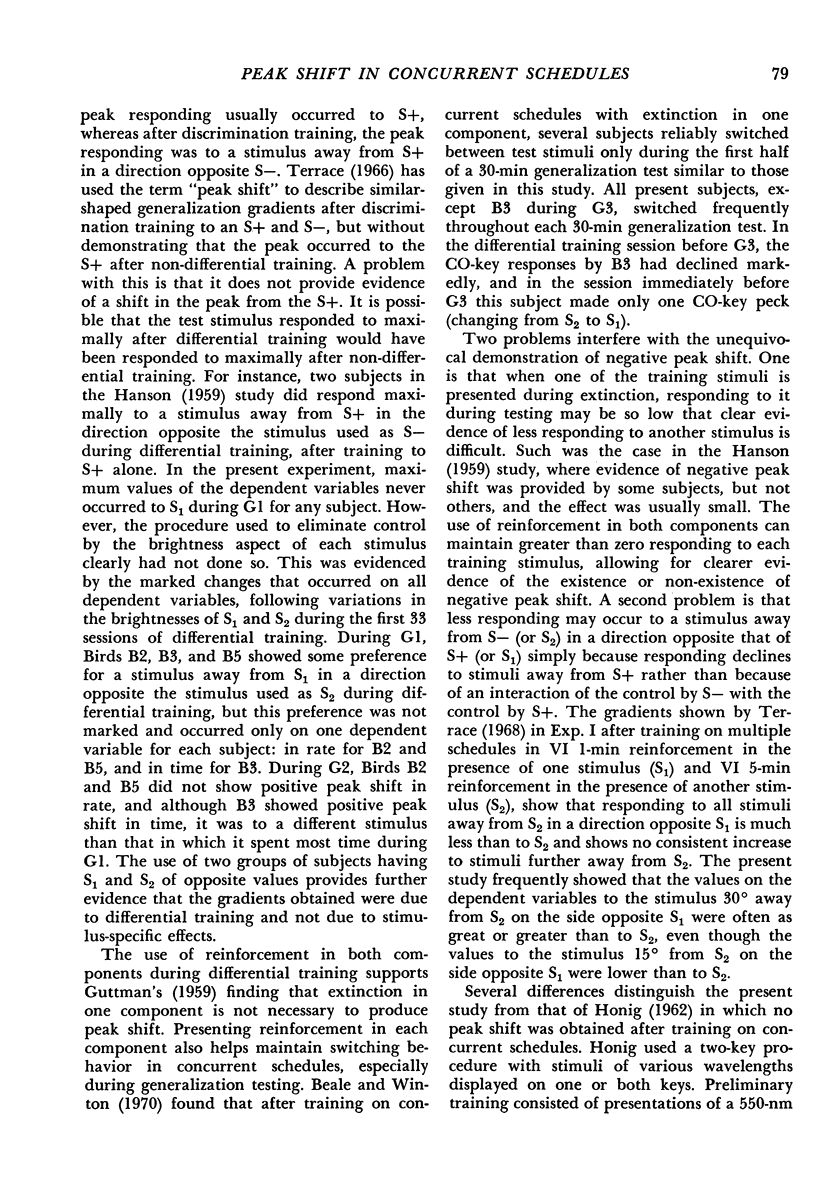
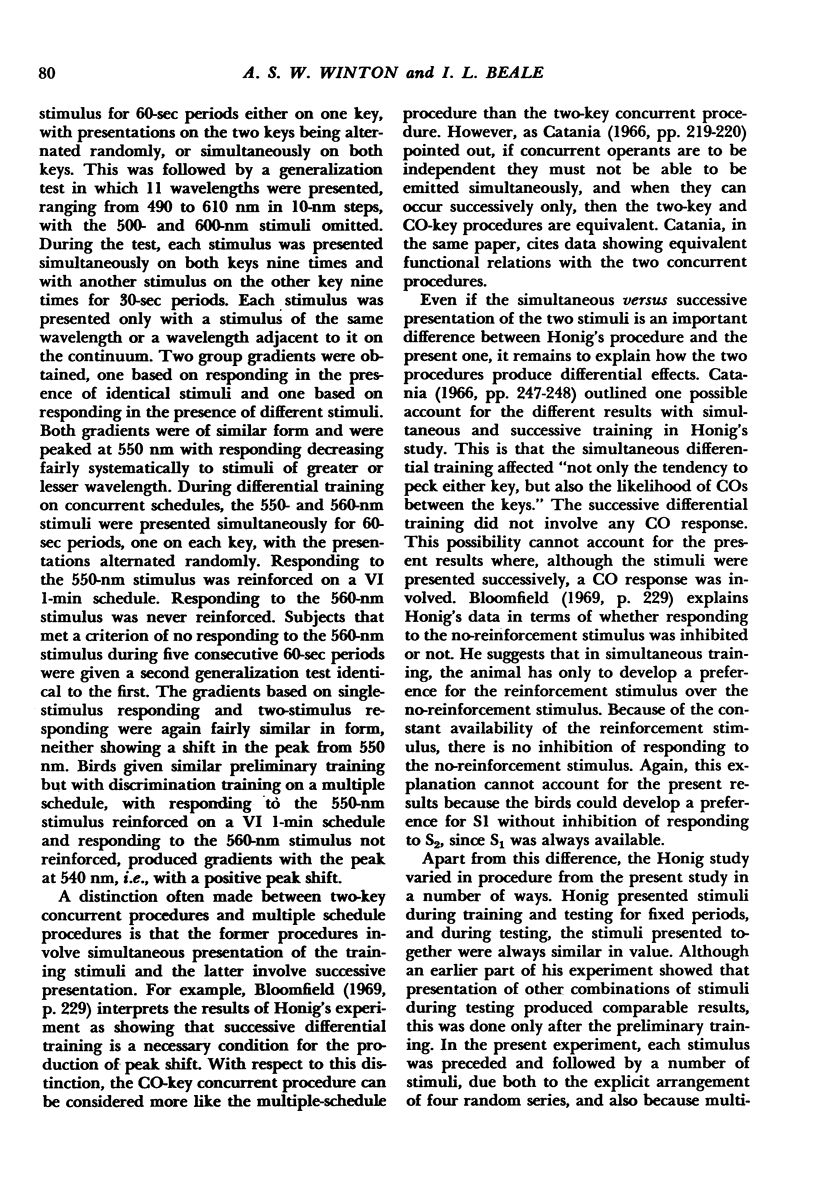
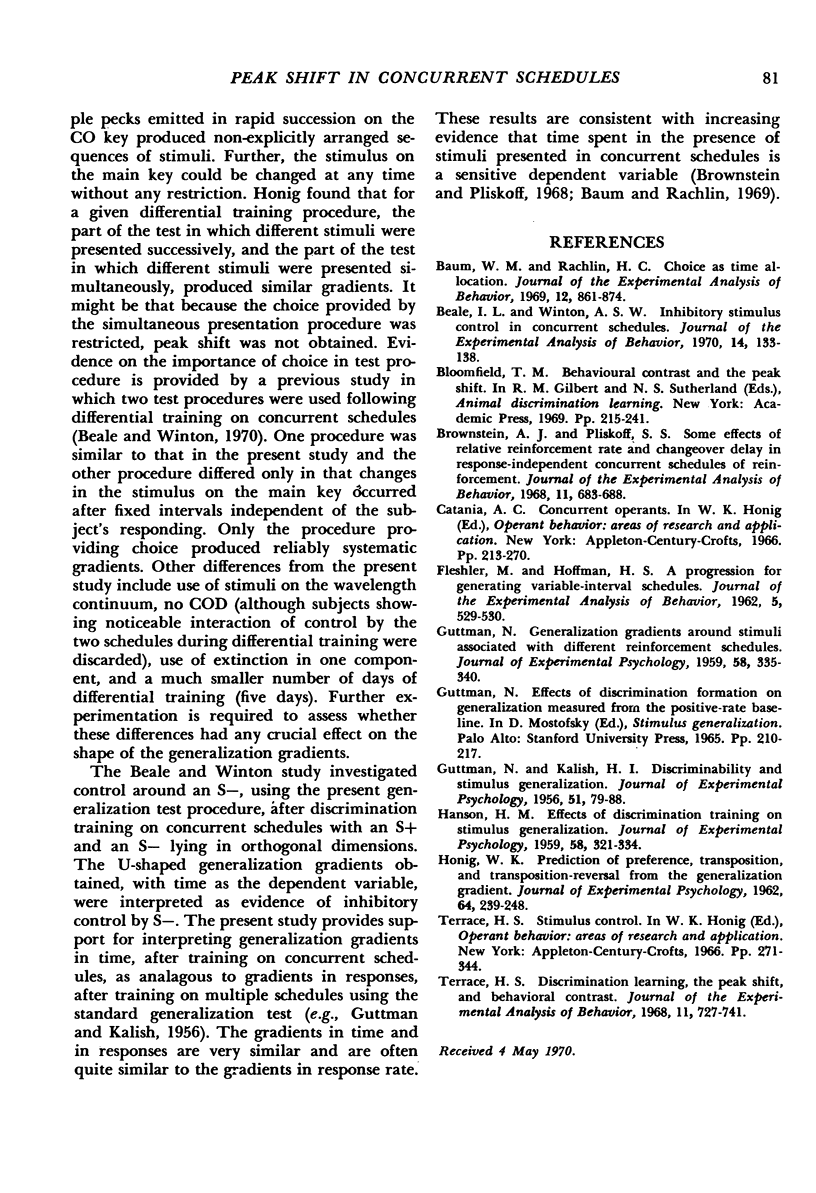
Selected References
These references are in PubMed. This may not be the complete list of references from this article.
- Baum W. M., Rachlin H. C. Choice as time allocation. J Exp Anal Behav. 1969 Nov;12(6):861–874. doi: 10.1901/jeab.1969.12-861. [DOI] [PMC free article] [PubMed] [Google Scholar]
- Beale I. L., Winton A. S. Inhibitory stimulus control in concurrent schedules. J Exp Anal Behav. 1970 Sep;14(2):133–137. doi: 10.1901/jeab.1970.14-133. [DOI] [PMC free article] [PubMed] [Google Scholar]
- Brownstein A. J., Pliskoff S. S. Some effects of relative reinforcement rate and changeover delay in response-independent concurrent schedules of reinforcement. J Exp Anal Behav. 1968 Nov;11(6):683–688. doi: 10.1901/jeab.1968.11-683. [DOI] [PMC free article] [PubMed] [Google Scholar]
- FLESHLER M., HOFFMAN H. S. A progression for generating variable-interval schedules. J Exp Anal Behav. 1962 Oct;5:529–530. doi: 10.1901/jeab.1962.5-529. [DOI] [PMC free article] [PubMed] [Google Scholar]
- GUTTMAN N. Generalization gradients around stimuli associated with different reinforcement schedules. J Exp Psychol. 1959 Nov;58:335–340. doi: 10.1037/h0045679. [DOI] [PubMed] [Google Scholar]
- GUTTMAN N., KALISH H. I. Discriminability and stimulus generalization. J Exp Psychol. 1956 Jan;51(1):79–88. doi: 10.1037/h0046219. [DOI] [PubMed] [Google Scholar]
- HANSON H. M. Effects of discrimination training on stimulus generalization. J Exp Psychol. 1959 Nov;58:321–334. doi: 10.1037/h0042606. [DOI] [PubMed] [Google Scholar]
- HONIG W. K. Prediction of preference, transposition, and transposition-reversal from the generalization gradient. J Exp Psychol. 1962 Sep;64:239–248. doi: 10.1037/h0048290. [DOI] [PubMed] [Google Scholar]
- Terrace H. S. Discrimination learning, the peak shift, and behavioral contrast. J Exp Anal Behav. 1968 Nov;11(6):727–741. doi: 10.1901/jeab.1968.11-727. [DOI] [PMC free article] [PubMed] [Google Scholar]


